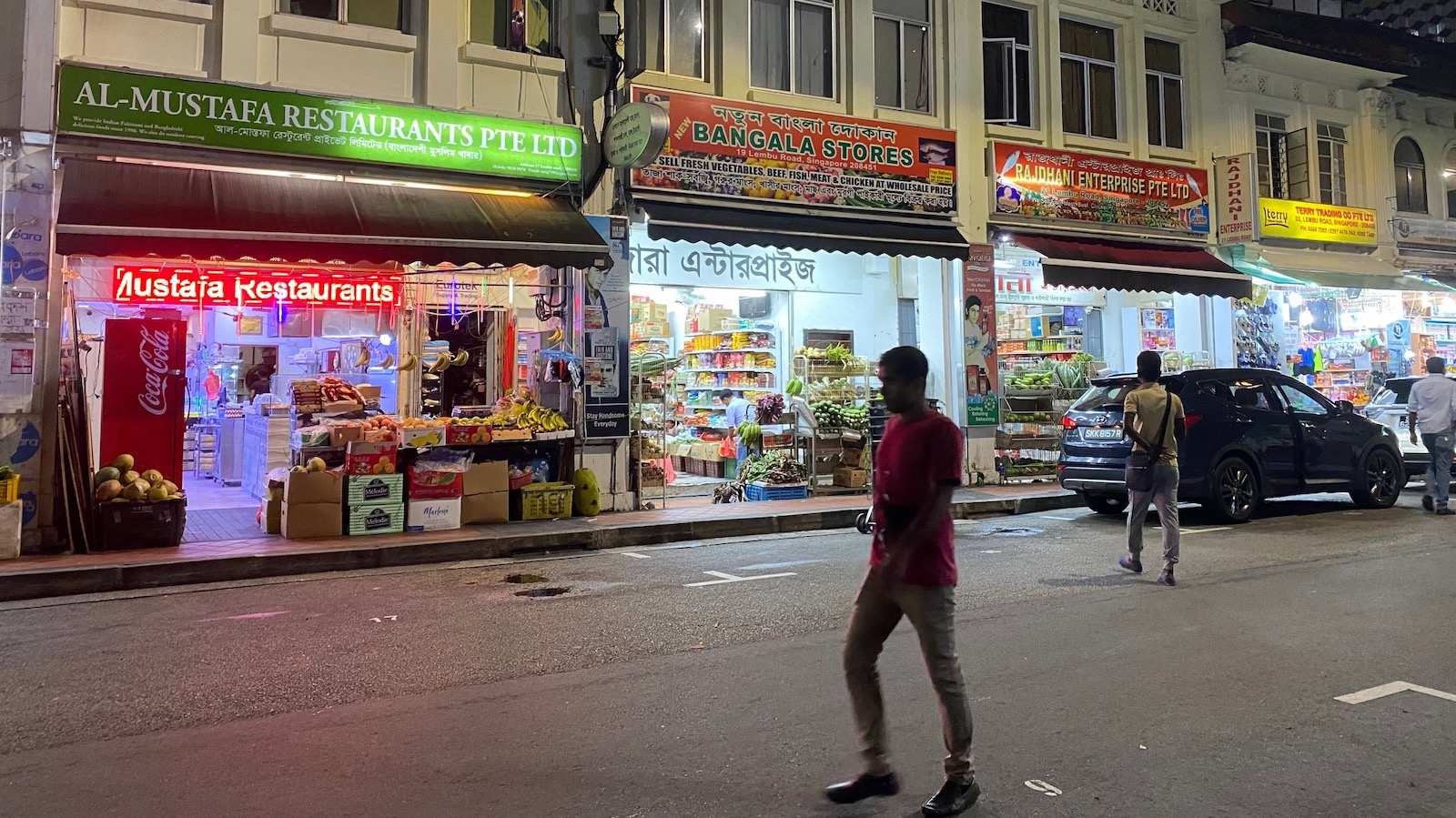It is February. We are in Bangla Square at Syed Alwi Road in Little India, the meeting place for Singapore’s almost 200,000 Bangladeshi migrant workers. This is where the migrant community gather to mingle with family and friends on evenings and days off. This is their home away from home.
Surrounding Bangla Square are minimarts selling vegetables and daily necessities, coffee shops, internet cafes, hotels, money changers, and incongruously, two rows of portable toilets. This social space, just a stone’s throw away from the lights of Mustafa Shopping Centre, has everything to serve the needs of the migrant community.
Standing here feels like stepping into a different world. I am aware of how out of place we look – a group of ten Chinese twenty-somethings winding through human traffic, peering inquisitively into shops we normally would not find ourselves in.
That was in February. It is April now when I write this. It is a different world now, in a totally different way. The world has turned on its head. Covid overshadows everything. Last night (Apr 6), I visited Bangla Square again. The day before Singapore ordered non-essential services closed, Bangla Square is still bustling, but there is a tension in the air. Perhaps it is a reaction to the three Covid-19 clusters that have sprung up in workers’ dormitories over the weekend, or the fact that Mustafa is shut for two weeks after a cluster emerged there on Apr 2.
Back in February, the tension I feel is that of an outsider; the migrant men stare curiously at us as we approach. I feel as though we are invading their space.
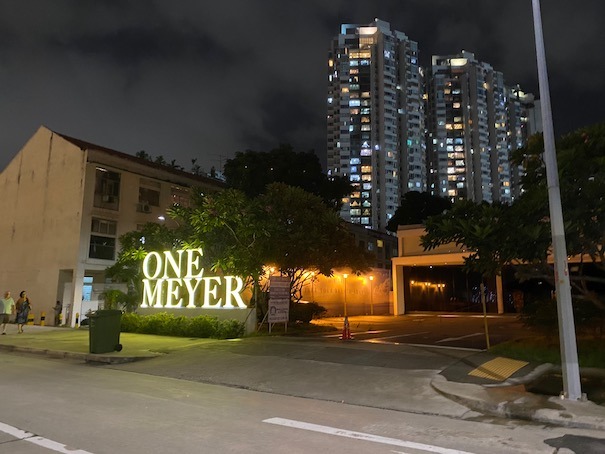
Two streets away from Bangla Square, next to City Square Mall, Peranakan shophouses are being listed for $4.6 million. At least three condominiums tower over the mall and there is a showroom for an upcoming building project.
There is a stark contrast between Bangla Square and its nearby upmarket establishments – a juxtaposition between the have and have-nots, familiar and unfamiliar, permanent and transient.
You might wonder why I ramble. This is not a typical conversation I would have with a friend.
I admit I had always perceived migrant workers as a generalised ‘other’. Sure, they build our homes. I see them as I go about my day – at construction sites, repairing MRT escalators, or resting in void decks. I read about them in the news – when the Little India riots were plastered on the front pages of newspapers in 2013, and more recently, the Covid-19 clusters that emerged from several dormitories and construction sites, resulting in the quarantine of 20,000 workers.
But they occupy a separate reality that is disparate from mine.
In February, however, I am on a learning journey organised by Migrant x Me, a social enterprise that provides public education on the migrant worker community in Singapore, and I am here “to understand”, as I tell our group facilitators.
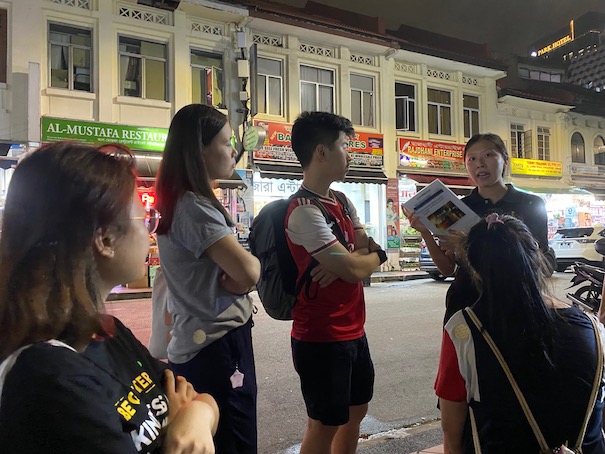
Volunteer facilitators, Victoria, 29, and Guangci, 21, encourage us to “dig deeper into the surface and to have a second thought why there is prejudice or why you might even be prejudiced.”
“We make quick assumptions when we don’t know about something. It’s part of our human psyche,” Victoria says.
Where there are NGOs that support and directly assist the migrant workers, including Humanitarian Organisation for Migration Economics (HOME), Transient Workers Count Too (TWC2) and HealthServe, Migrant x Me reaches out mainly to Singaporeans and focuses on public education.
“For the past five or six years, when I was in the scene, there was no one doing (public education) and I saw that it was a need because public awareness is still low,” says Isabel Phua, 25, founder of Migrant x Me.
“An IPS survey showed that youths are still not as open to migrants because of lack of interaction and understanding. So I see ourselves as that platform to bridge that.”
It had never occured to me before why migrant workers seemed to be on their phones all the time, though I did question how they could afford a phone with their $500 salaries, not taking into account hefty agent fees that could go as high as $20,000.
The answer is simple. Connection.
“It is a luxury for them to go back (to their home country) as they may not have the time and money.” Victoria says. “Kids have to get used to growing up seeing their father on screens.”
Migrant workers return home to their families only once every few years. Putting myself in their shoes, I too would be willing to purchase a phone just to hear my loved ones, even if it put me in debt.
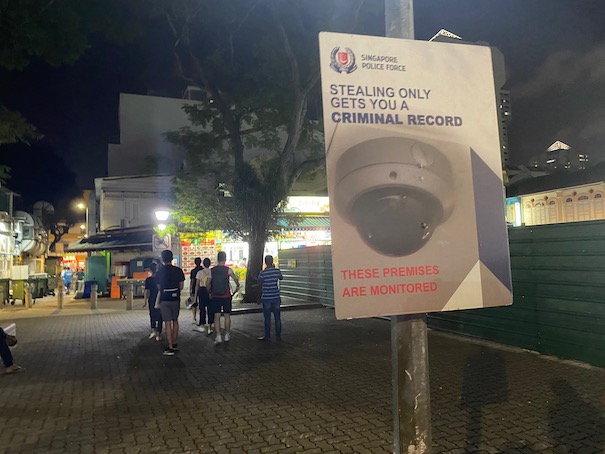
It’s easy to take something like family and friends for granted when we stay in such close proximity to them.
“Companionship is something to think about. We don’t think about it because we have friends, but they don’t,” says SMU undergraduate Lee Wai, 22.
The volunteers, who do strike up conversations with the migrant workers occasionally, share that most can speak some English.
“Some are passionate about sports, some talk about their families, and even girlfriends in Singapore,” Guangci says. “When both parties are trying you can always have a conversation.”
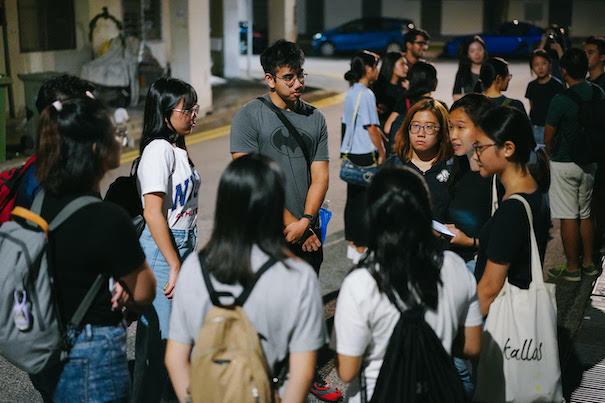
Although I am heartened that the government and NGOs have stepped in to support the migrant worker community by providing amenities such as polyclinics and soup kitchens, their needs go beyond the physical.
Are the minimarts, internet cafes and curry houses along Bangla Square really enough to meet the needs of the migrant workers?
Migrant workers are humans who deserve kindness and dignity too. They crave companionship just like us.
At the end of the night, the ten of us disperse. I return home to the comfort of my four-room flat in Bukit Batok and the luxury of a hot shower.
The next day, I pen a simple thank-you card and give it to a migrant worker in my neighbourhood.
In light of the Covid-19 outbreak in the workers’ dormitories, I reach out to Isabel again who shared that the cases of infected workers has unfortunately exacerbated xenophobic sentiments among the public.
“People are shunning foreign workers because they think they are infected (with the coronavirus).” Isabel says.
“The situation in the dormitories was a ticking time bomb and this outbreak definitely highlights the importance of having dormitories that are with proper sanitation.”
Stepping into the shoes of the migrant worker community has helped me to see that our worlds are not that different after all. Where they intersect, opportunities for kindness appear.
I remember what Guangci told me during our visit to Bangla Square: “Not everyone can go on a learning journey, but you can be their learning journey.”
My learning journey has just begun.
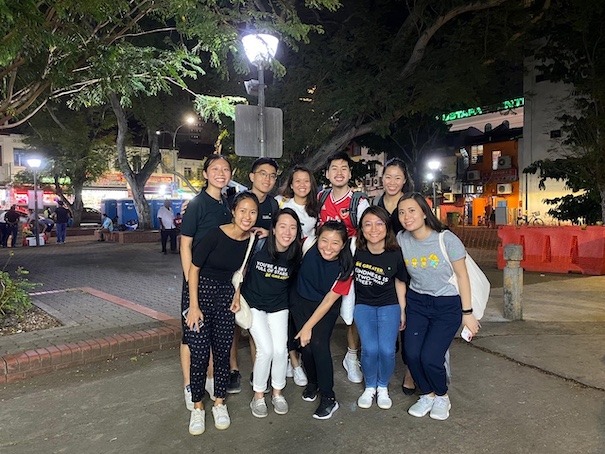
If you like what you read, follow us on Twitter and Telegram to get the latest updates.
